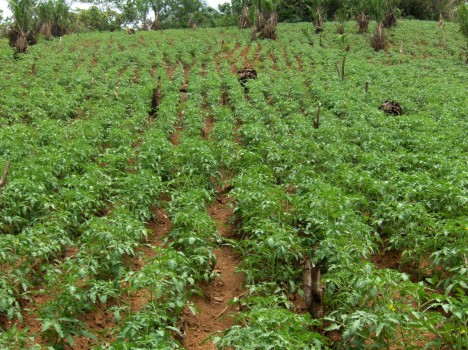Ghana among best 10 in food sufficiency – Report
By Edmund Smith-Asante
Ghana is one of 10 countries that have
improved greatly on food sufficiency or decreased hunger, since 1990, says the
2014 Global Hunger Index (GHI) report.
All the 10 countries were able to reduce their GHI score by 50 per cent or more, from 1990 to 2014, the report released on Monday indicates.
Ghana is also currently placed 16 on the country GHI scores by rank and is the only sub-Saharan African nation in the first 20 bracket, according to the report on world hunger put together by the International Food Policy Research Institute (IFPRI), with support from Concern Worldwide and Welt Hunger Hilfe, all non-governmental organisations committed to fighting hunger.
The hunger report, has been produced since 2006 and the 2014 edition is on the theme; “The challenge of hidden hunger.” It combines three indicators; undernourishment, child underweight and child mortality into one index.
“In Africa south of the Sahara, only one country – Ghana - is among the 10 best performers in terms of improving its GHI score since 1990,” the report said.
From a high score of 27.2 per cent, the Ghana has reduced its GHI score to 7.8 per cent, to attain its current position on the global table.
How feat was achieved
According to the report, several factors
accounted for Ghana’s substantial decrease of its GHI scores since 1990.
“The country reduced child underweight and child mortality by more than 40 per cent and slashed the proportion of undernourished from 44 per cent in 1990 - 1992 to less than 5 percent in 2011–2013.
“Ghana is considered one of the most politically stable countries in Africa south of the Sahara and has invested heavily in agriculture, rural development, education, and health.
“The country boosted its vaccination rates for common childhood diseases in the past 30 years (World Bank 2014), and the government provided farmers with information, agricultural inputs, and infrastructure such as roads and storage facilities,” the report states.
It adds that investments in agriculture helped to transform other sectors, while the government also launched an ambitious programme to give all kindergarten and primary school pupils a daily hot, nutritious meal made from locally produced foods.
The report
In the GHI report, 39 countries made modest
progress with scores that dropped by between 25.0 and 49.9 per cent, and 17
countries decreased their GHI scores by less than 25 percent.
From the 1990 GHI to the 2014 GHI, 26 countries reduced their scores by 50 percent or more. In terms of absolute progress, comparing the 1990 GHI and the 2014 GHI, Angola, Bangladesh, Cambodia, Chad, Ghana, Malawi, Niger, Rwanda, Thailand, and Vietnam saw the biggest improvements in scores.
The report indicates that the levels of hunger are “extremely alarming” or “alarming” in 16 countries, with Burundi and Eritrea classified as “extremely alarming.”
It shows further, that most of the countries with “alarming” GHI scores are in sub-Saharan Africa. However, unlike many other countries south of the Sahara, where hunger has been decreasing, Swaziland is an exception.
This is indicated by the biggest increase (9.9 in 1990 to 16.5 per cent in 2014) it suffered in a GHI score.
Overall, the 2014 GHI shows that progress has been made in reducing the proportion of hungry people in the world.
This year’s report focuses on hidden hunger, which is a critical aspect of hunger that is often overlooked. Also known as micro-nutrient deficiency, hidden hunger affects more than an estimated 2 billion people globally.
The repercussions of these vitamin and mineral deficiencies, the report says, can result in child and maternal death, physical disabilities, weakened immune systems, and compromised intellects.
“Where hidden hunger has taken root, it not only prevents people from surviving and thriving as productive members of society, it also holds countries back in a cycle of poor nutrition, poor health, lost productivity, persistent poverty, and reduced economic growth,” the report notes.
Recommendations to governments
The report tasks governments to demonstrate
political commitment and join multilateral institutions to invest in and
develop human and financial resources, increase coordination, and ensure
transparent monitoring and evaluation to build capacity on nutrition, to fight
hunger.
“Governments must also create a regulatory environment that values good nutrition. This could involve creating incentives for private sector companies to develop more nutritious seeds or foods.
“Transparent accountability systems are needed in order to ensure that investments contribute to public health, while standardised data collection on micro-nutrient deficiencies can build the evidence base on the efficacy and cost effectiveness of food-based solutions,” it adds.
Writer’s email: Edmund.Asante@graphic.com.gh
FACTS
·
The 2014
GHI has been calculated for 120 countries for which data on the three component
indicators, undernourishment, child underweight and child mortality are
available and where measuring hunger is considered most relevant.
·
The
index excludes some higher-income countries because the prevalence of hunger
there is very low.




Comments
Post a Comment